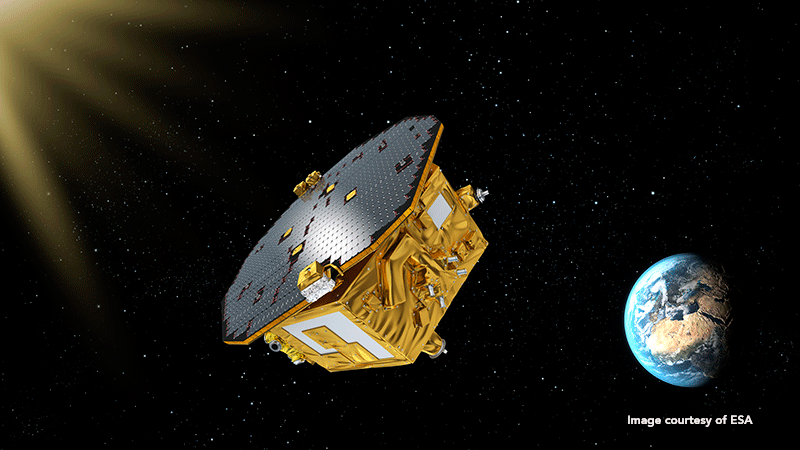First results of the Lisa Pathfinder mission

The ESA’s LISA Pathfinder mission has already shown the technology required to build a gravitational wave observatory in space. This was the conclusion reached following the presentation of the mission’s results, which took place on 7 June in the European Space Astronomy Centre (ESAC) in Villanueva de la Cañada, Madrid.
Launched in December 2015, the satellite travelled to its operational orbit 1.5 million kilometres from the sun, where it started its scientific mission on 1 March 2016. After only two months of scientific operations, the results show that the two identical gold-platinum cubes housed in the spacecraft are in free fall, under the exclusive influence of gravity unaffected by external forces, with a precision more than five times better than that initially required.
The demonstration of the mission’s key technologies opens the door to the development of a large space observatory, capable of detecting gravitational waves emanating from a wide range of exotic objects in the Universe.
These waves, whose existence Albert Einstein predicted a century ago, are oscillations in the fabric of spacetime that move at the speed of light. They were directly detected for the first time by the Laser Interferometer Gravitational-Wave Observatory (LIGO) in September 2015.
GMV has been a significant participant in the industrial consortium led by Airbus Defence & Space Ltd, to whom the mission was entrusted. Among the activities developed by GMV, it is worth highlighting its responsibility for validation of the software of the mission payload or LTP (LISA Technology Package); support to the analysis of the mission and orbit control of the European Space Operations Centre (ESOC); and support to the management of scientific data from the European Space Astronomy Centre (ESAC).